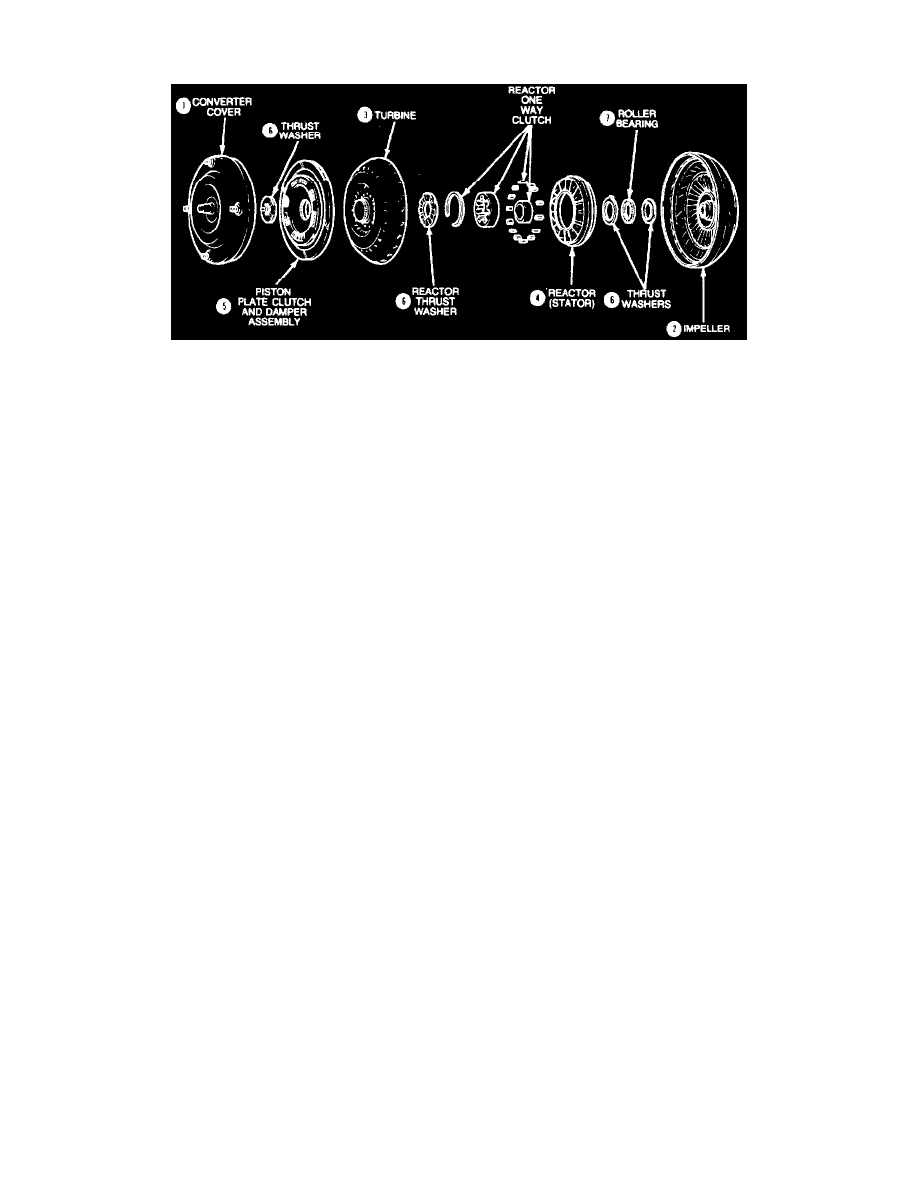Aerostar 2WD V6-245 4.0L (1990)

Component Functions
Exploded View Of Locking Torque Converter
1
The converter cover (1) is bolted to the engine flywheel and is driven at engine speed. It has a hub that pivots in the crankshaft. Thus the
cover transmits engine power into the converter.
2. The impeller (2) is the pumping member for fluid coupling and torque multiplication. It is welded to and driven by the cover. Its rear hub
drives the transmission oil pump.
3. The turbine (3) is the driven member of the converter. It is driven by fluid from the impeller and is splined to the input shaft.
4. The reactor (4), also called the stator, causes hydraulic reaction during torque multiplication. It includes a one-way clutch to hold it
stationary only when reaction is required.
5. The piston plate clutch and damper assembly (5) has friction material on the outer portion of the plate and a spring cushioned damper
assembly. It transmits engine power to the turbine from the converter cover.
6. The thrust washers (6) and roller bearing (7) provide bearing surfaces for the converter components that turn against each other.
Torque Multiplication
1. Torque multiplication occurs from stall (engine turning but turbine stopped) up to engagement of the converter clutch.
2. The impeller is driven at engine speed. Fluid is supplied from the valve body to the spaces between the vanes. Centrifugal force causes the
fluid to be set in motion and forced out of the openings around the inner ring. The fluid is directed toward the turbine vanes. Striking the
turbine vanes, the fluid causes it to turn in the same direction as the impeller. The fluid flows around the turbines' inner ring and is directed
to the reactor. The reactor is held stationary by its one-way clutch. Its vanes direct the fluid back to the impeller in a direction that assists
the impeller. The impeller again accelerates the fluid and returns it to the turbine with increased energy.
3. Torque multiplication comes from a reduced turbine speed and reuse of the velocity of the fluid returning from the reactor to the impeller.
As turbine speed increases in relation to the impeller, there is less energy in the returning fluid, and therefore less torque multiplication.
Operation And Power Flow
